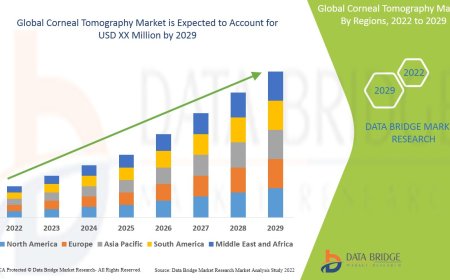The Future of Architectural Operations: Trends Every Firm Should Watch
Discover future trends in architectural operations shaping efficiency, design, and client delivery for firms aiming to stay competitive in a dynamic industry.

The architectural landscape is shifting rapidly, and firms that fail to adapt risk falling behind. From technology integration to operational efficiency and sustainable workflows, the future of architectural operations is being shaped by a blend of innovation and market demands. If your firm wants to maintain a competitive edge, understanding these trends is no longer optionalit's essential.
For deeper strategies on aligning your operational models with these future demands, visit Connective Consulting Group, where you can learn practical frameworks to optimize architectural firm operations for the evolving industry landscape.
In this article, we will explore architectural firm operational trends, future architecture trends, and operations trends for architecture firms that are transforming how design practices function, grow, and deliver value.
1?? Technology Integration as the Backbone
Emerging technologies are no longer experimentalthey are foundational for future architectural operations:
-
BIM (Building Information Modeling): Continues to streamline collaboration, reduce errors, and enable precise visualization.
-
AI-Driven Design Tools: Accelerate schematic iterations and predictive analytics, helping firms deliver faster.
-
Digital Twins: Allow real-time monitoring of building performance for post-occupancy insights.
-
AR/VR: Enhances client presentations, making immersive walk-throughs standard in client engagement.
Tip: Start training your teams to use advanced BIM integrations paired with AR/VR for client-facing processes. This will not only improve project clarity but also client satisfaction and operational efficiency.
2?? Emphasis on Sustainable Operations
Sustainability is no longer limited to design elements; it is integrated into operational models of architectural firms:
-
Carbon-Neutral Workflows: From using renewable energy in offices to green computing.
-
Sustainable Supply Chains: Firms are auditing their material sourcing and partnerships to align with climate goals.
-
Circular Design Operations: Incorporating lifecycle thinking into every stage of design and documentation.
Example: Some forward-looking firms are investing in energy dashboards within their studios to monitor real-time usage and identify optimization opportunities, aligning with client expectations for environmentally responsible partners.
3?? Hybrid and Remote-Ready Studio Models
Post-pandemic adaptations are shaping future architecture trends, including:
-
Cloud-Based Collaboration: Using cloud BIM platforms for seamless remote teamwork.
-
Asynchronous Project Management: Embracing flexibility while maintaining accountability through transparent workflows.
-
Hybrid Meetings: Using digital whiteboards and AR tools for internal and client presentations.
Insight: Firms that implement hybrid operational strategies can attract top talent from broader geographic pools while reducing overhead costs, aligning with the agile future of work.
4?? Data-Driven Decision Making
Firms are leveraging data analytics not only in design but also in internal operations:
-
Time and Resource Tracking Tools to optimize workflows.
-
Predictive Project Management uses past project data for better estimation and delivery timelines.
-
Client Feedback Loops are integrated into operational processes for iterative improvement.
Tip: Begin by conducting a data audit of your past projects, analyzing where delays occurred, and using this insight to improve future project scheduling and profitability.
5?? Human-Centered Design Thinking in Operations
The focus on employee well-being is influencing architectural operations:
-
Flexible schedules to combat burnout.
-
Collaborative but quiet zones in studio layouts.
-
Integrating wellness initiatives in firm culture.
Firms prioritizing well-being see higher retention, better creativity, and fewer disruptions in project delivery, leading to stronger operational stability.
6?? Diversification of Services
Architectural firms are broadening offerings to stay relevant:
-
Design-Build Integration to control timelines and quality.
-
Post-Occupancy Services to maintain relationships and recurring revenue.
-
Advisory Services around zoning, sustainability, and real estate strategy.
This diversification requires operational alignment, from staff training to technology investments, but creates resilience in a fluctuating market.
7?? Automation and AI in Repetitive Tasks
Repetitive documentation, compliance checks, and drawing reviews are being automated:
-
AI can generate code compliance checks.
-
Automated drafting tools reduce manual effort for standard details.
-
Project tracking systems can automate reminders and deadline alerts.
Freeing staff from repetitive tasks allows firms to focus on high-value design thinking, client engagement, and strategic growth.
8?? Client-Centric Digital Platforms
Clients expect real-time updates and transparency:
-
Client Dashboards for project milestones.
-
Automated Updates to reduce manual communications.
-
Visual Progress Tracking using AR/VR tools.
Firms implementing these tools enhance client trust while reducing operational overhead in project communications.
Preparing for the Future: Practical Steps
Heres how to align your architectural firm with these future operational trends:
? Assess your current technology stack.
? Invest in staff training for new tools and workflows.
? Establish sustainability metrics for operations.
? Pilot hybrid models with clear guidelines.
? Use data for continuous improvement.
? Automate where possible without compromising quality.
For actionable guidance and consulting on optimizing your operational workflows, Connective Consulting Group offers specialized frameworks to help architectural firms prepare for the evolving demands of the industry.
Conclusion: The Time to Adapt is Now
The future of architectural operations is rooted in technology, sustainability, flexibility, and data. Firms that proactively adapt to these trends will not only deliver better projects but will also create operational resilience in a competitive market.
What trend do you believe will have the most significant impact on your firm's future operations? Let us know your thoughts below!




































